Most coffee lovers, no matter where they go, tend to seek out the best coffee shops to start their day. Coffee, for them, is not just a drink but an integral part of their lives. Likewise, for Manoz Shahi, training director at The Baristas Coffee School in Bagbazar, Kathmandu, the idea of getting free coffee everyday lured him into taking barista training and eventually working at a coffee shop.
“Over the years, my passion for coffee tasting and coffee making has become stronger. I still love coffee so much that I would rather not have lunch but I cannot skip my coffee,” says Shahi.
The Barista’s Coffee School was established in 2017 with the intention to develop a good coffee culture in Nepal. “Over 200 coffee shops have cropped up in Kathmandu in the last five years. But most of them just serve substandard coffee. Many do not even know the basic difference between cappuccino and latte,” says Shahi adding that they wanted to train and produce good baristas in Nepal. Their team comprises of four instructors and three trainers and they provide their students with a 15-day comprehensive barista course. Here, Shahi runs you through some basics about coffee that every coffee connoisseur must know as well as tells you how to prepare your favorite drink(s) at home.
Getting the basics right
A coffee machine is primarily used to make espresso-based drinks. The most common ingredients while making coffee is espresso, steamed milk and froth. The proportion in which these three ingredients are used depends on the type of coffee you are making.
Single shot espresso makes the base of most coffee beverages. It comprises of seven grams coffee and 30 ml water. Double shot espresso is for those who prefer strong coffee and it contains 17 grams of coffee.
Making bubbles and froth can sometimes be a little tricky. So always remember to use a stainless steel jug to make the froth with the coffee machine. The stainless steel jug is commonly called the pitcher. You also need to make sure that the milk is cold and that the pitcher is never more than half full.
Instruments and their use
Coffee Grinder: As the name suggests, it is a coffee beans grinding machine. The shelf life of coffee in a coffee grinder is usually one day. This means you should not keep coffee beans in the grinder for more than a day if you want to retain its freshness.
Coffee machine/Espresso maker: This helps you make espresso and froth for your coffee.
Portafilter: It is a part of the espresso maker that is used for measuring and holding coffee grounds during the process of brewing.
Pitcher: It is a stainless steel jug that helps in making latte art.
Iced Americano
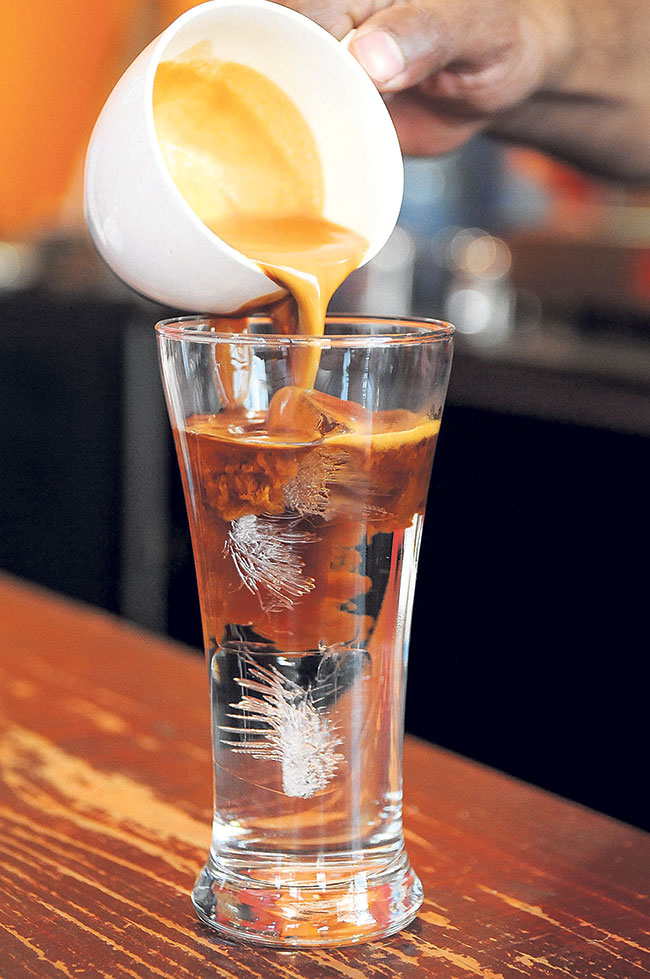 This bold and refreshing coffee can definitely be a good start to a hectic day. A perfect treat for the summer season, it is also a delight for people who do not like milk in their coffee. According to Shahi, Iced Americano is consumed all over the world without sugar. “That is the beauty of it. You can get the real taste of coffee when you don’t put any sugar in it,” he says.
This bold and refreshing coffee can definitely be a good start to a hectic day. A perfect treat for the summer season, it is also a delight for people who do not like milk in their coffee. According to Shahi, Iced Americano is consumed all over the world without sugar. “That is the beauty of it. You can get the real taste of coffee when you don’t put any sugar in it,” he says.
Make your own
A win-win for Nijgadh?

Take 17 grams ground coffee beans in a portafilter (This will make double shot espresso).
Tap the grounds using firm pressure. Make sure that the surface is smooth. Any abnormalities on the surface can alter the taste of the coffee.
Take a glass and put in some ice cubes (according to your preference).
Attach the portafilter firmly to the espresso maker and extract 30ml (double shot) espresso.
Pour in the espresso into your glass. Then add 90 ml water.
Stir it slightly and your drink is ready.
Café Mocha
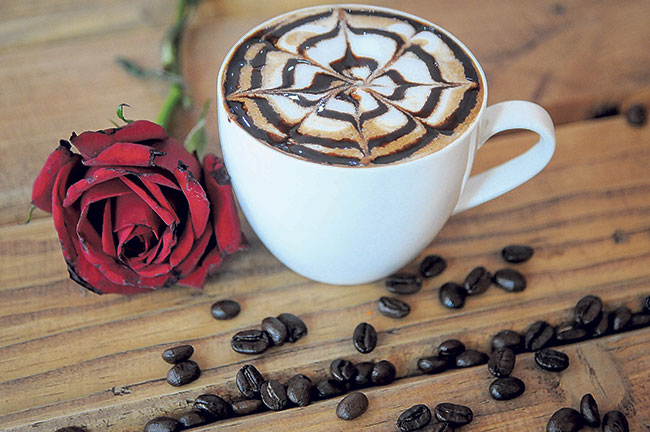 This is basically a chocolate-based coffee with espresso. The popularity of this drink proves that it is everyone’s absolute favorite.
This is basically a chocolate-based coffee with espresso. The popularity of this drink proves that it is everyone’s absolute favorite.
Make your own
Pour in 30 ml of chocolate syrup in a cup.
Froth about 120 ml milk till 70 degrees centigrade.
Make 30 ml espresso with seven grams coffee ground.
Add the brewed milk to the cup and your mocha is ready.
You can make simple patterns on the coffee with the help of chocolate syrup.
Cappuccino: Fun fact
Cappuccino is supposed to comprise of 50% milk and 50% foam. Because of its thick foam, no coffee art can be done on top of it. So there is actually no such thing as cappuccino art.
French press espresso
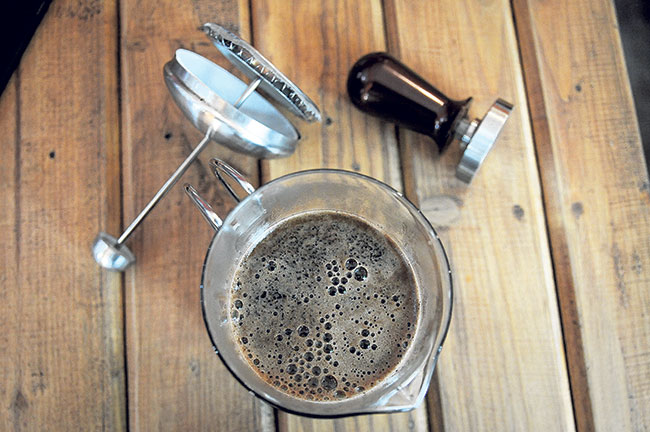 This is a perfect recipe for someone who loves making coffee at home. To get the ideal taste and texture, you will require coarsely ground coffee beans. Soak the ground beans for about three to five minutes to extract the perfect flavor.
This is a perfect recipe for someone who loves making coffee at home. To get the ideal taste and texture, you will require coarsely ground coffee beans. Soak the ground beans for about three to five minutes to extract the perfect flavor.
If you intend to look like a coffee expert, you also need to learn the specific way of drinking this beverage as well. “Tasting an espresso shot can be more complicated than tasting wine,” says Shahi. First you need to sniff in the aroma of the coffee. Then slurp the coffee while making an audible sound. (Yes, that’s how coffee experts do it.)
When you slurp in the espresso, you will first taste the bitterness of the drink. The beverage first tastes acidic and then leaves a slight tinge of sweetness in your mouth.
Make your own
First, lift the filter out of the French press. The filter is made up of mesh and a rod.
Put seven grams of coffee for a single shot espresso into the French press. Soak it in water and stir it slowly.
For the coffee to get perfectly brewed, soak it in water for about three to five minutes.
Add about 30 ml water and press down on the coffee grounds with the help of a mesh plunger. The filter separates grounds from your beverage.
Your espresso is now ready to be served.
Café latte
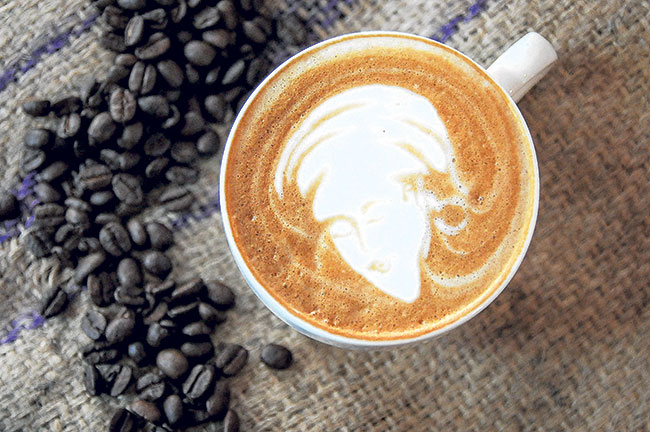 The secret to making a perfect latte is getting the consistency right by perfectly combining the ingredients. According to Shahi, a café latte should comprise of 10% froth and 90% milk. This beverage appeals to different coffee lovers differently. While some like to sip it in a paper cup when they rush to work, others enjoy their hot brewing latte with an innovative latte art on it.
The secret to making a perfect latte is getting the consistency right by perfectly combining the ingredients. According to Shahi, a café latte should comprise of 10% froth and 90% milk. This beverage appeals to different coffee lovers differently. While some like to sip it in a paper cup when they rush to work, others enjoy their hot brewing latte with an innovative latte art on it.
Make your own
First take medium light coffee beans. Grind them finely in a bean coffee grinder.
In a portafilter, take seven grams coffee grounds.
Add some water in your coffee machine.
Close the lid of your coffee machine with the portafilter to apply pressure on the ground beans and wait for your espresso to brew.
To make steaming and frothing milk, take about 120 ml cold whole milk and a good pitcher.
Start steaming the milk and stop the machine when the temperature of the milk reaches 70 degrees. Remember, placing a thermometer inside the pitcher is important. Milk retains its natural sweetness till 70 degree centigrade and this is perfect for latte.
Finally, the best part about making a latte is pouring hot steamed milk into the espresso. Although making a latte art might take a lot of practice and patience, you can pour the drink slowly from a good distance to create a few ripples in the drink.
Flat White
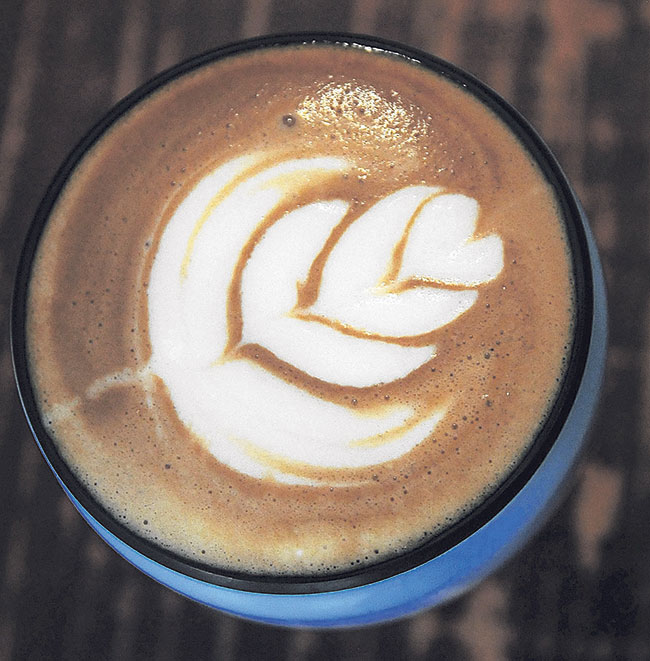 This coffee drink is hardly found in any cafes in Kathmandu. However, flat white is a very popular espresso-based drink in New Zealand and the USA. The only difference between flat white and café latte is the quantity of different ingredients. In this drink, you will need to add 30 ml espresso and 60 ml milk.
This coffee drink is hardly found in any cafes in Kathmandu. However, flat white is a very popular espresso-based drink in New Zealand and the USA. The only difference between flat white and café latte is the quantity of different ingredients. In this drink, you will need to add 30 ml espresso and 60 ml milk.
Make your own
To begin with, flush the espresso machine to remove excess coffee and remains.
Add seven grams fine coffee grounds to a portafilter and make 30 ml espresso with the help of a coffee machine.
Steam 60 ml whole milk until you get perfect froth at 70 degrees centigrade.
Finally, slowly pour the froth into a cup with the help of a pitcher.
Here again, you will need expert guidance and practice to make any art. But if you still wish to try it at home, pour the milk slowly with the pitcher. Placing the pitcher away from the cup while pouring it helps milk to dive into the espresso rather than just floating on top of the beverage.


































